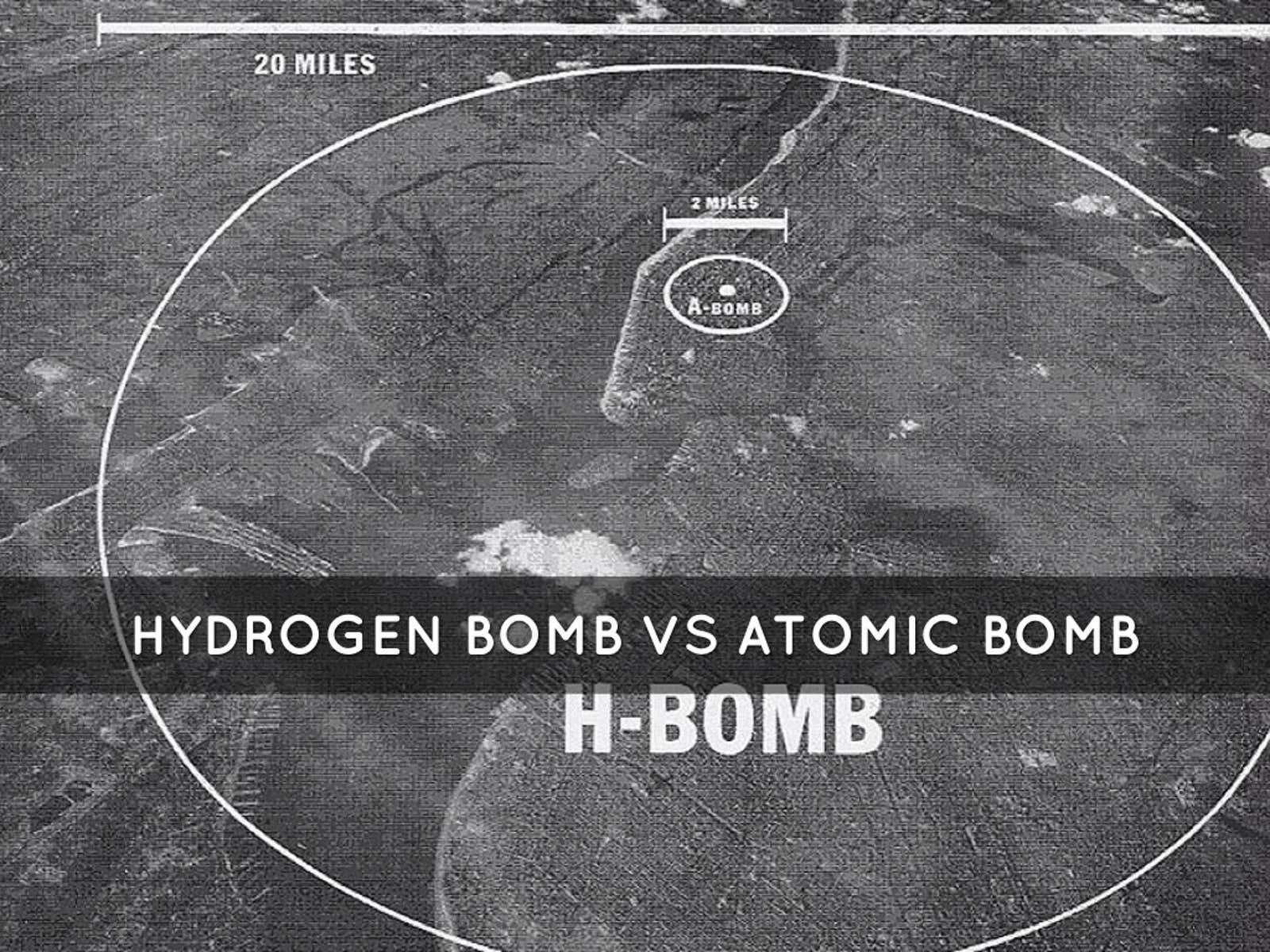What Is the Difference Between a Hydrogen Bomb and a Conventional Atomic Bomb?

North Korea detonated what they called a hydrogen bomb on Sunday , and the weapon test has raised serious concerns for the United States and its allies. But what makes a hydrogen bomb more terrifying than a conventional atomic bomb?
First, typical atomic bombs use nuclear fission or the fission of unstable uranium or plutonium atoms to increase the explosive power of the bomb. When atoms split, their subatomic neutrons are released, splitting more atoms and releasing destructive amounts of energy. These types of atomic bombs were used during World War II against Japan and, according to experts, North Korea has tested them ever since. But the tremors felt during Sunday’s tests could be attributed to the explosion of a hydrogen bomb, albeit a small one, although experts remain skeptical.
Hydrogen or thermonuclear bombs are actually much more terrifying than conventional atomic bombs. They contain thermonuclear fuel that can be ignited in the first stage, which is still powered by nuclear fission. But hydrogen bombs have another trick up their sleeve. They use the second stage of reactions using nuclear fusion (the force that powers the sun) to basically increase the destructive power of a typical atomic explosion. When deuterium and tritium (types of hydrogen) are fusioned and the atoms fuse together, they emit neutrons to create an even more destructive force in the chain reaction when they come into contact with the uranium layer of the bomb. If you thought that atomic bombs were bad, then this is really disgusting.
To give you some perspective, one of the first high-yield thermonuclear bombs tested by the United States on Bikini Atoll in 1954, called Castle Bravo , was more than 1,000 times more powerful than the standard Little Boy atomic bomb dropped on Hiroshima. in 1945 byEnola Gay . This bomb killed 66,000 people almost instantly and left at least 69,000 wounded and sick, so imagine what a thermonuclear bomb can do. In fact, the explosion at Castle Bravo was so powerful that its designers were caught off guard when it happened. They calculated the explosion power of almost 10 megatons , which led to serious radiation contamination of the area and radiation sickness of the local residents of the island. Another way to explain the difference in destruction: an atomic bomb could kill half of Manhattan; a hydrogen bomb could vaporize all of New York .
Nevertheless, experts are skeptical that North Korea can create and detonate a hydrogen bomb. This is not even the first time they have said this. In January 2016, they also announced the explosion of a hydrogen bomb , but experts then were also skeptical. The very notion of a hydrogen bomb test is troubling, but it is also possible that North Korea has tested a so-called “boosted atomic bomb.” These boosted bombs simply add some thermonuclear gas to the bomb’s atomic nucleus , increasing the power of the explosion, but not as much as a hydrogen bomb. They only have three times the explosive power of Little Boy. In the meantime, we will have to wait and see what American intelligence can tell us in the coming days.
Update: Castle Bravo was not the first fusion device tested in the US – that honor goes to Ivy Mike – it was the first in a series of high-power nuclear device tests. The text above has been revised to reflect the correct information. Thanks @WShawChristian .